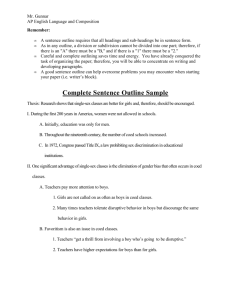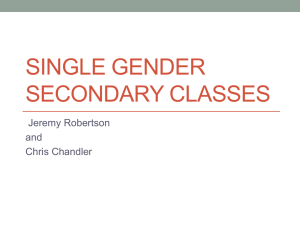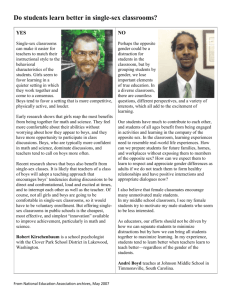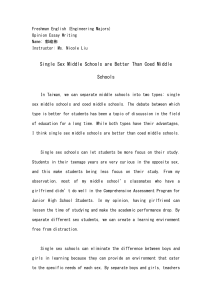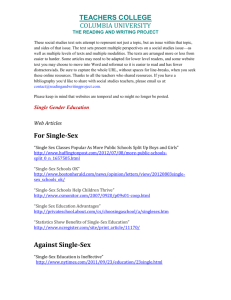AP Language Researched Argument Paper Outline Sample
advertisement
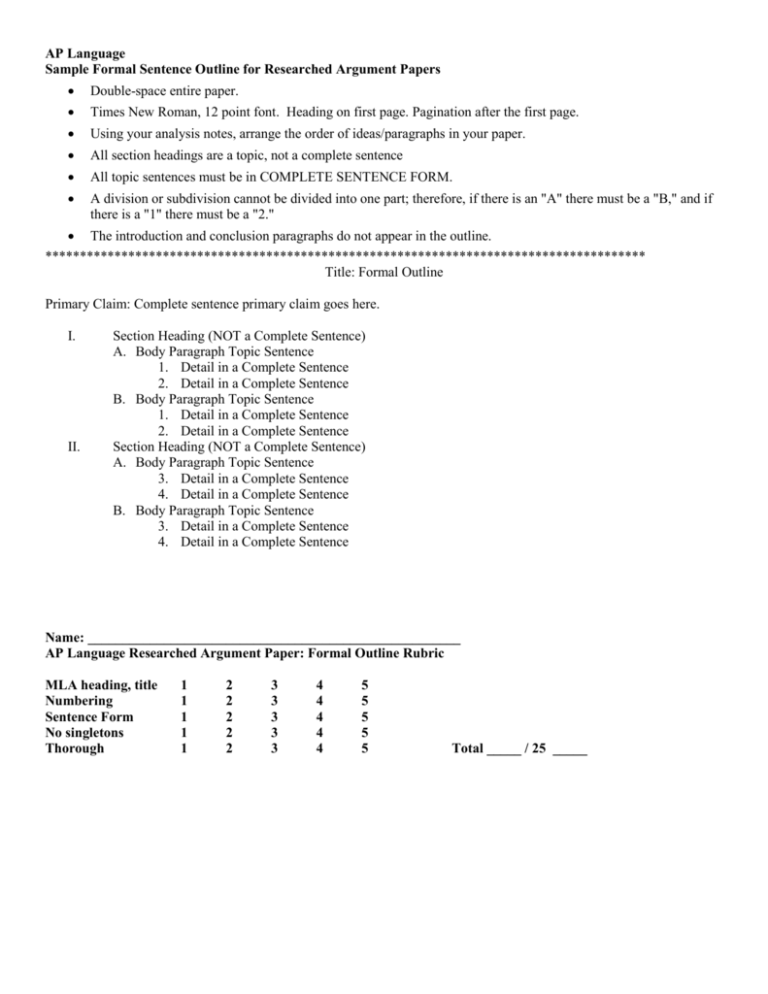
AP Language Sample Formal Sentence Outline for Researched Argument Papers Double-space entire paper. Times New Roman, 12 point font. Heading on first page. Pagination after the first page. Using your analysis notes, arrange the order of ideas/paragraphs in your paper. All section headings are a topic, not a complete sentence All topic sentences must be in COMPLETE SENTENCE FORM. A division or subdivision cannot be divided into one part; therefore, if there is an "A" there must be a "B," and if there is a "1" there must be a "2." The introduction and conclusion paragraphs do not appear in the outline. *************************************************************************************** Title: Formal Outline Primary Claim: Complete sentence primary claim goes here. I. II. Section Heading (NOT a Complete Sentence) A. Body Paragraph Topic Sentence 1. Detail in a Complete Sentence 2. Detail in a Complete Sentence B. Body Paragraph Topic Sentence 1. Detail in a Complete Sentence 2. Detail in a Complete Sentence Section Heading (NOT a Complete Sentence) A. Body Paragraph Topic Sentence 3. Detail in a Complete Sentence 4. Detail in a Complete Sentence B. Body Paragraph Topic Sentence 3. Detail in a Complete Sentence 4. Detail in a Complete Sentence Name: ______________________________________________________ AP Language Researched Argument Paper: Formal Outline Rubric MLA heading, title Numbering Sentence Form No singletons Thorough 1 1 1 1 1 2 2 2 2 2 3 3 3 3 3 4 4 4 4 4 5 5 5 5 5 Total _____ / 25 _____ No Boys Allowed: Formal Outline Primary Claim: Research shows that single-sex classes are better for girls and, therefore, should be encouraged. I. History of Women’s Education A. During the first 200 years in America, women were not allowed in schools. 1. Initially, formal education was only for men. 2. Girls learned home skills from their mothers. B. In 1972, Congress passed Title IX, a law prohibiting sex discrimination in educational institutions. 1. Desegregation of women followed racial desegregation. 2. Women even began to be admitted to traditionally male military academies. II. Gender Bias in Coed Classes. A. Teachers pay more attention to boys. 1. Girls are not called on as often as boys in coed classes. 2. Many times teachers tolerate disruptive behavior in boys but discourage the same behavior in girls. B. Favoritism is also an issue in coed classes. 1. Teachers “get a thrill from involving a boy who’s going to be disruptive” (Antegine 2009). 2. Teachers have higher expectations for boys than for girls. III. Equality in Gender Specific Classes A. Girls perform better academically in a single-sex class. 1. Textbooks “show an inherent and often inadvertent bias against females” (Rolands 1998). 2. This bias also shows itself in teaching techniques. B. Techniques that are disadvantageous to girls are more apparent in certain subject areas. 1. Girls show more interest in math when taught in single-sex classes. 2. This is also the case in science courses. IV. Personal Benefits of Single-Sex Classes A. All-girl schools offer a nurturing environment in which girls are not afraid to try. 1. The single-sex environment makes girls feel more comfortable in class. 2. In all-girl schools, one is respected for doing well in class, instead of being mocked by other students. B. Girls have lower self-esteem than adolescent boys. 1. Single-sex education compensates for this disparity. 2. All positions of power are held by girls.
